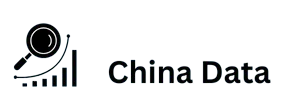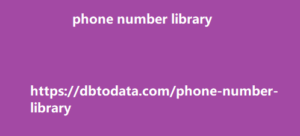Manage Your On-Page Optimizations SE Ranking creates only a list but a task manager for on-page SEO. You can change task status or add a custom task if something needs to be done with the page besides fixing errors. button in the upper right corner you’ll see below. SE Ranking On Page SEO Checker – Task Manager With this additional element, you can immediately plan your optimizations after you’ve analyzed how it performs SEO-wise. Key Takeaway On-page SEO is a never-ending process that brings impressive results when done correctly. To do it right, you should consider many different things: keywords usage, media files, internal linkings, UX, and a lot more.
You’ll be spending several days just
collecting and processing this data, but SE Ranking makes this process efficient. Not only does it perform all those checks, but it also delivers results in an extremely convenient way. This makes on-page optimization much easier for beginners and experts alike. And with their new Tasks feature, you can streamline this process to surpass your competitors. What feature are you excited to try on SE Ranking’s updated On-Page SEO Tool? Comment down below! Have you utilized Screaming Frog’s crawl comparison feature on your website audits? How did it go? Let me know by leaving a comment belowIf you want to learn more about how to recover from Google Penalizing your website, try checking out our guide on How to Fix Google Penalties.
With this, you can see how you can enhance
your page in terms of content. You can also see other metrics like domain age or site speed to see the differences. These will give you an idea of what contributes to a page’s authority. See Competitors’ Meta Tags and Site Structure SE Ranking On Page SEO Checker – Content Comparison Besides text and keyword usage, content meta tags and structure are also important things to consider. See how your rivals form tags and headings, their keyword usage principles, and structure to find opportunities to improve your content with this metric. Improve Text Content The text content is all about keyword usage.
The checks indicate the correct practices
of keyword usage (e.g., integration of keyword in heading), so you can rely on them. Meanwhile, this section has tons of other important data about your content. This includes word count, content uniqueness and readability, and more. You can access details on any check by clicking on it to see the comparison of your stats to the competitors. Here’s what it looks like: SE Ranking On Page SEO Checker – Text Content Monitor Meta tags and URL The search robots first see the page URL and tags in the <head> section. What comes first has greater importance, so you must ensure those elements are okay.
When Google decided to update its official
documents in June 2022, SEO belgium phone number library practitioners and specialists started worrying about a particular piece of content that’s been added to the Googlebot crawl limit. Stated within Googlebot’s official Google documentation is the following statement: “Googlebot can crawl the first 15MB of an HTML or support text-based file. Any resources referenced in the HTML such as images, videos, CSS, and JavaScript are fetched separately. After the first 15MB of the file, Googlebot stops crawling and only considers the first 15MB of the file for indexing. The file size limit is applied to the uncompressed data…” Source: Googlebot What is Googlebot? Googlebot is the official generic name for Google’s website crawler.
It’s currently responsible for gathering
information from your website for SEO assessment. It provides essential information to Google on whether to index a web page or not. Googlebot is separated into two types- Googlebot Desktop and Googlebot Smartphone. As the name suggests, these two work hand-in-hand in determining whether Google should index a website under Desktop and Mobile platforms. So how does the 15MB Googlebot crawl limit factor into all these? Boundaries of the 15MB Crawl Limit The 15MB crawl limit is the standard limit set for both Googlebot Desktop and Smartphone. Being applied only to the text encoded within the HTML file or the supported text-based file of the web page.
This translates to the Googlebot crawl limit
setting its boundaries within the text in rise of productivity in a your HTML file. The same texts can be found whenever one inspects the page source of a web page. Sample of Text Found Within an HTML File But what does this mean for the images, videos, CSS, and JavaScript resources being utilized within the HTML file? Consider the quoted text below, “…resources referenced in HTML such as images, videos, CSS, and JavaScript are fetched separately…” This statement simply means that the 15MB crawl limit for Googlebot doesn’t take into account the file sizes of resources being referenced in an HTML file. For example, when an image is apparent on a web page, it is usually defined by a line of code.
Sample of an IMG Tag within
an HTML File, Referencing An Image bulk data Whenever an image is defined through a URL- this DOES NOT account for the 15MB crawl limit. This is because the image is “referenced” from a different URL rather than being “encoded” within the HTML file itself. The difference between Referencing and Encoding Referencing a media or resource within an URL outside of your web page. Like a person placing an object in his/her bag instead of carrying it. This way, it’s easier to store and access the object while retaining free movement.

